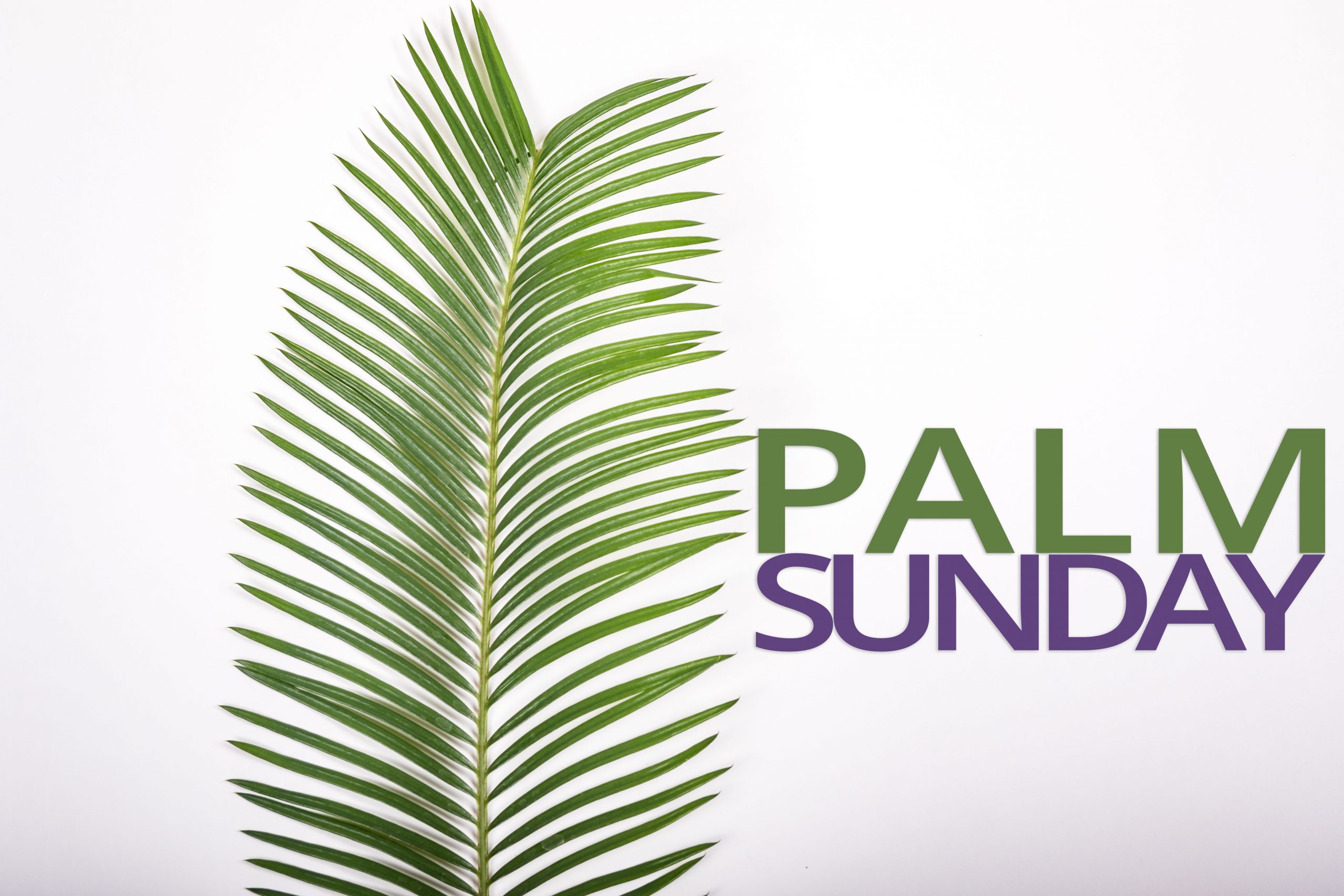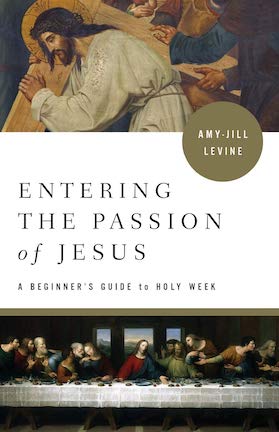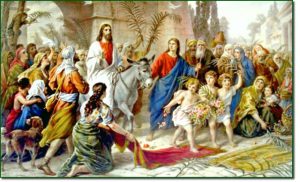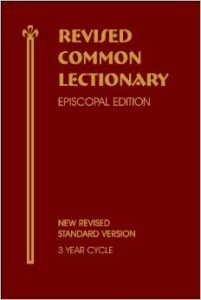
The Collect: Almighty and everliving God, in your tender love for the human race you sent your Son our Savior Jesus Christ to take upon him our nature, and to suffer death upon the cross, giving us the example of his great humility: Mercifully grant that we may walk in the way of his suffering, and also share in his resurrection; through Jesus Christ our Lord, who lives and reigns with you and the Holy Spirit, one God, for ever and ever. Amen.
Virtual Coffee Hour Zoom Instructions: April 5 10:30 AM
-From a PC, Mac, iPhone, iPad, or Android device, click on https://zoom.us/j/398077843
-The first time you use this, you will need to download a software program, but it is very fast. When prompted, click “Join Audio Conference by Computer.”
-If you want voice only, please dial (312) 626-6799. And enter meeting ID: 398 077 843.
A St. Paul’s reading of the passion narrative according to Matthew
Video sermon from The Rev. Dr. J. Paul Board. Text of the sermon is posted at the bottom of this page.
Lectionary: Read the Lessons Here
“The Palms” by Jean Baptiste Faure – Brad Cresswell with Jane Weber at the piano

Instagram Challenge! Take a picture featuring branches, coats, or the Palm Sunday story and send to Jennifer for posting on SPECMaumee.
Dr. Amy-Jill Levine is a professor of Jewish Studies at Vanderbilt and provides important context to each day’s events during Holy Week.

A Sermon for Palm Sunday by J. Paul Board
 There are two gospel stories on Palm Sunday. And there are two liturgies. It should be two services. The church combines them because next Sunday is Easter. If all you do is Sunday Morning Church, then the Passion has to be today because next Sunday is the Resurrection.
There are two gospel stories on Palm Sunday. And there are two liturgies. It should be two services. The church combines them because next Sunday is Easter. If all you do is Sunday Morning Church, then the Passion has to be today because next Sunday is the Resurrection.
Jesus marches into Jerusalem in triumph and glory on Palm Sunday. The people are singing and making joyful noises. Jesus dies on the cross in pain and humiliation on Friday. The people are yelling and cursing.
The Palm Sunday liturgy is a meant to be a procession. If we did it right at St. Paul’s, you probably wouldn’t recognize it. We don’t do it right. We are supposed to gather outside for scripture, prayers, and song. Then we should process into the sanctuary with our palm branches for the “second” liturgy. Instead, we gather in the sanctuary and the palms come to us. From a liturgical perspective, we miss out on the experience of the procession. The “second” liturgy includes the scripture readings with the Passion: the death of Jesus on the cross.
So I ask you, which story do you take home with you on Palm Sunday?
Physically, you carry a palm. Some of you fold them into crosses. Most of you put the palm somewhere in your kitchen near the fridge, perhaps lodged behind a picture frame. It stays there all year.
But Jesus also dies on the cross. It’s the final word on Sunday church. We leave church thinking about the crucifixion.
So just to clear, Jesus marches into Jerusalem in triumph and glory. A week later he is crucified in humiliation. Both stories are remembered back to back on Palm Sunday. Now, there is a lot that happens between the two events. Lots of Bible stories that you know well but skip during Holy Week. The palms and the cross are the sandwich. The in-between stories are the goodies in the sandwich.
The stories are:
Jesus cleanses the temple of the money changers
Jesus curses the fig tree
The parable of the two sons
The parable of the wicked tenants
The parable of the wedding banquet
The greatest commandment: Love God and your neighbor
Jesus denounces scribes and Pharisees
The lament over Jerusalem
The destruction of the temple foretold
Persecutions foretold
The necessity for watchfulness
The faithful or the unfaithful slave
The parable of the ten bridesmaids
The parable of the talents
The judgement of the nations
That’s just in the Gospel of Matthew. On Palm Sunday, we focus on the sandwich, the layers of bread on the top and bottom.
Except no one is here this year. Services are suspended and the church building is closed. A friend walked into the building yesterday. She needed to retrieve something, and this is what she texted me last night.
“Being in the church building was apocalyptic. Everything just froze. It’s not the cleanest, the bulletin boards are out of date, the last projects are just sitting and waiting, the Sunday school attendance sheets just sit without checkmarks…the church smelled like old building instead of like cleaning products, flowers, people, food, etc.”
That’s partly not true. The food pantry is active. The hallways outside my office are overrun with food product from the city campaign. But’s she right about everything else. We suspended housekeeping. No one cares about the bulletin boards. There are no flowers.
We are doing church online and the evidence is you are reading my sermon. We are mailing paper copies to folk without computers. Somehow, we are finding a way to be the church when we cannot be together. It is critical for our health and safety for us to stay home.
Our Lenten Series this year was Why Church Matters. It’s an ironic topic because COVID-19 wasn’t on our radar when we chose the title or conceived the curriculum. We put our program online quickly as church was suspended. I enjoyed it. I thought we covered the material well. We began with why church matters in a secular world that doesn’t care about church. We finished with why church matters to us in a world where we can’t come to church. We can’t even come out of our homes unless we hold an essential job.
Palm Sunday gives us another reason Why Church Matters. It’s the sandwich. It’s not just the bread but all the goodies inside.
It’s the story. The Christ event is the defining moment of the human story. For the Jews, the defining moment is the Exodus. For Christians the defining moment is the death and resurrection of Jesus Christ. We can’t have a resurrection without a cross.
In Why Church Matters, I ended with a study on tribes. Human beings have always been in tribes. It is our nature. In early history, humans gathered in tribes for safety and protection. Today, we think in terms of politics, religion, and sports teams. We still gather in tribes. The dark side of tribes is we can be exclusive of others. This is why Jesus taught us to love our neighbor (i.e., one of the goodies in the sandwich between Palm Sunday and the Passion). The bright side of belonging to a tribe is it gives us our identity. It tells us what we care about and who to protect. The tribe gives us our shared values.
Our tribe is Christian. As one participant said in the discussion, his tribes are God, family, and country. (I said that sounded like the Marines.) It is true. May God, family, and country protect us during this pandemic. We literally need all three.
COVID-19 won’t stop us from remembering our story. This is why Palm Sunday is so important. The sandwich gives us our identity. We cannot survive this pandemic without God, family, and country. It is a tragic mistake to try and survive without them.
I pray for each of you. I ask you to pray for me. Especially during Holy Week when we cannot be together. We should still remember our story.
In Christ, Amen.

